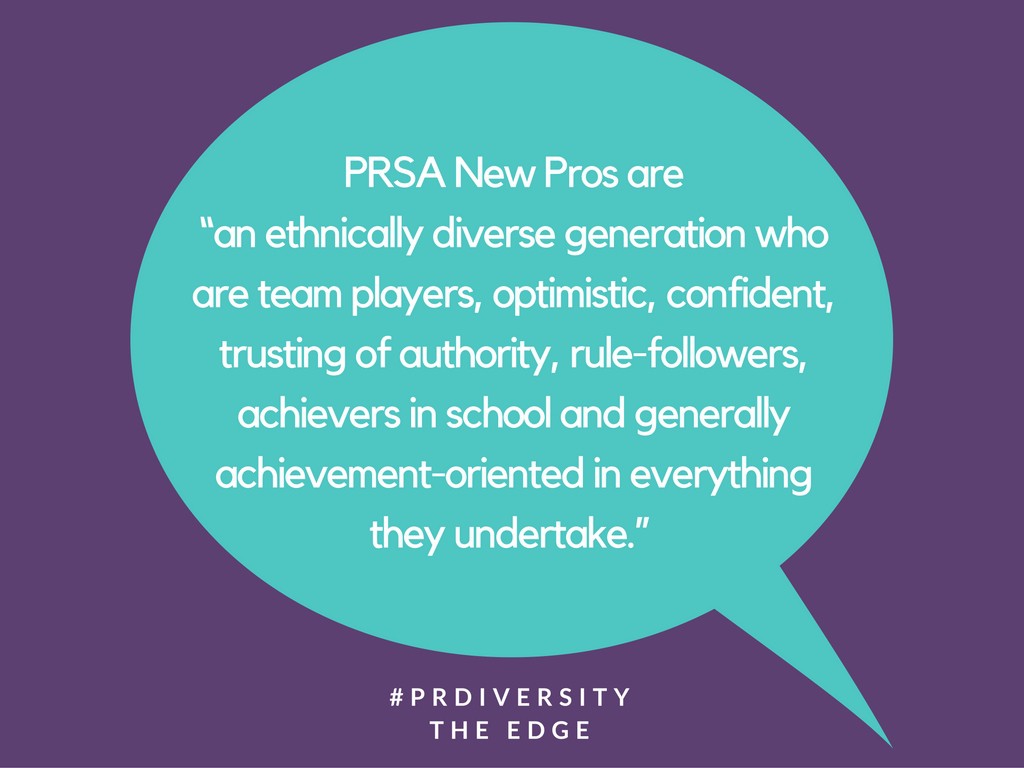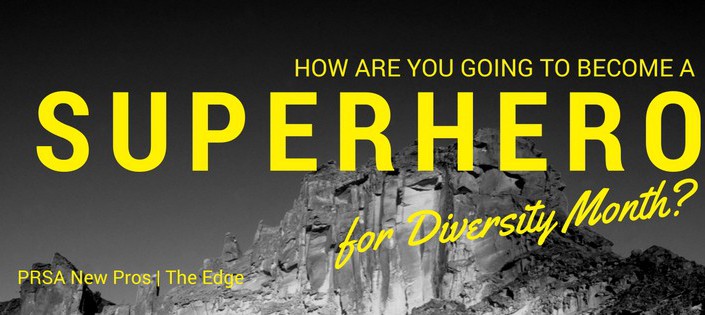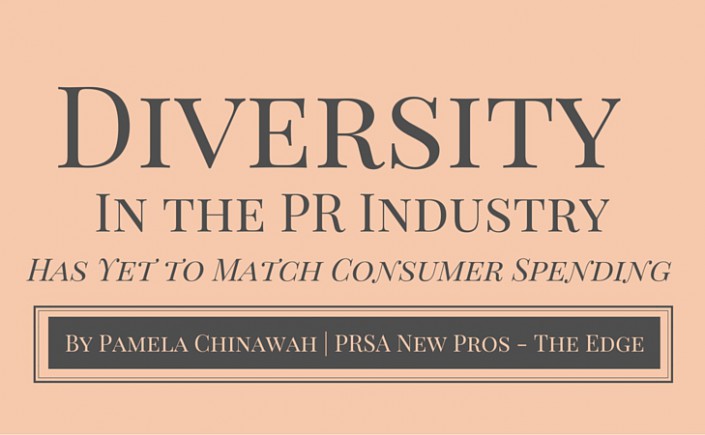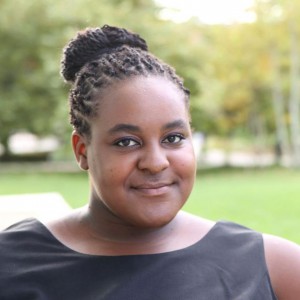Diversity is one of the biggest employer buzzwords out there right now, but the truth is that PR has a big diversity problem. One of the main problems with workplace diversity is that it’s sometimes viewed as a top-down initiative meant to make the company look good, not to improve the workplace or services offered. New Pros, with their differing outlooks and definitions of what “diversity” is, can help solve PR’s lingering issue.
Original plans for diversity included hiring people of different races, backgrounds, genders, etc., and to have those groups equally represented within the workplace to create a diverse employee pool. But is that actually the thing to do to help better understand and provide for your clients and audiences or is that just checking off boxes and creating a fun illusion of inclusion and diversity? I’d say it’s the latter.
Today’s new pros are a great example of the cultural shift happening in America, and the world over. More and more of us come from blended backgrounds and we’re described as “an ethnically diverse generation who are team players, optimistic, confident, trusting of authority, rule-followers, achievers in school and generally achievement-oriented in everything they undertake.” Seeing, interacting with and working with people from diverse backgrounds is commonplace because that’s the world we’ve come of age in. We care more about diversity in ideas, philosophies and perspectives than how people look, where they’re from and whether there’s equal representation.
The biggest benefit of a diverse team is that it inspires creativity and productivity. Thoughtfully listening to and talking with those who see things and think about things in ways that you may not helps us to see new perspectives and think outside of our normal boxes. It almost goes without saying that there’s no such thing as being too creative in PR. The open flow of communication between employees of all backgrounds is important to effective brainstorming and problem solving and should be used by all teams, even if that means taking the brainstorming sessions into your own hands and on your own time.
In addition to being more productive and better problem solvers, a diverse team tends to adapt more easily. Whether that’s to new obstacles, changes within the team or changes to the project, adaptability is important to success, especially in PR, where things constantly change. Talking through problems and strategizing the best plan for what’s ahead is a key advantage that comes from bringing together people with varied perspectives and backgrounds to tackle a project.
Since diversity often be a bigger initiative put in place by executives or managers, it may seem like there’s nothing that a new pro can do to influence how diverse a team they are work on. There are plenty of things that today’s new pros can do to make diversity a common part of their their career development. When you have the opportunity, speak up about any coworkers whom you think would add a good, new perspective to a project you’re working on if there’s an opportunity for adding a new team member or seeking out their thoughts.When you’re in a position, maybe a little further along in your career, to make decisions on team structure, bring in members who think differently than you do and offer a different perspective.
New pros should also look outside the workplace to embrace diversity. Look for opportunities to embrace another culture, through festivals, celebrations, studying or simply interacting with those of another culture near you. Travel and experience new areas and traditions. Seek out friends of different backgrounds and ideas. Make diversity less about having equal representation or “checking the boxes” to make sure everything’s covered and more about being a well-rounded, open-minded professional.
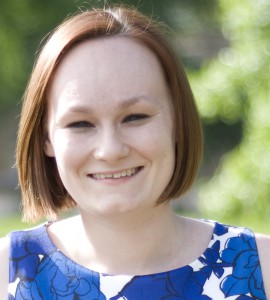 Robyn Rudish-Laning is a member of South Carolina’s PRSA chapter and is communications coordinator for the South Carolina Council on Competitiveness. Robyn is also a member of the New Professionals executive committee and is a two-time graduate of Duquesne University who currently lives in Columbia, SC. You can connect with her on LinkedIn or Twitter or read her blog here.
Robyn Rudish-Laning is a member of South Carolina’s PRSA chapter and is communications coordinator for the South Carolina Council on Competitiveness. Robyn is also a member of the New Professionals executive committee and is a two-time graduate of Duquesne University who currently lives in Columbia, SC. You can connect with her on LinkedIn or Twitter or read her blog here.

